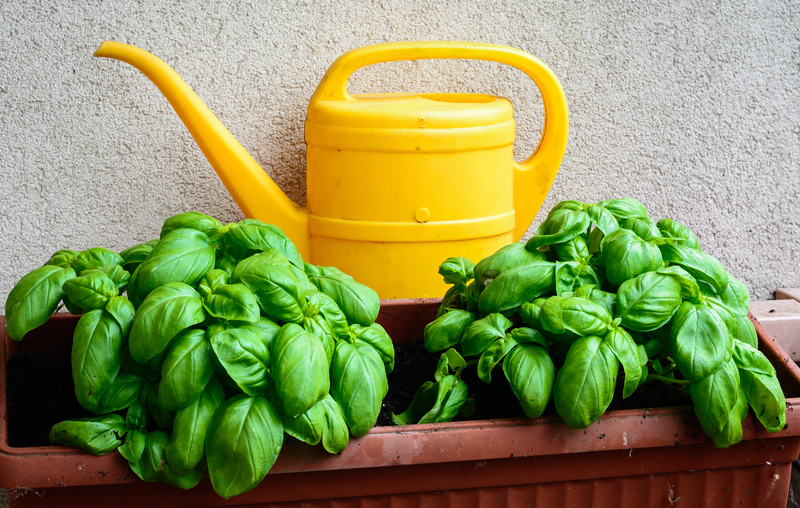Protect Your Garden Majesty from the Winter Elements: A Comprehensive Guide
As the cold winds of winter approach, the survival of your garden majesty--those beautiful and valuable plants in your outdoor oasis--hangs in the balance. Even the most resilient flora can struggle against snow, frost, bitter winds, and fluctuating temperatures. This comprehensive guide dives deep into protecting your cherished garden treasures from harsh seasonal elements and ensures a vibrant spring return. If you want to preserve your garden's beauty and health, read on for trusted solutions, innovative ideas, and practical steps.

Why Winter Garden Protection Matters
Winter is a formidable opponent for gardeners. Not only do the visible elements--ice, snow, and frost--threaten the aesthetic of your garden, but covert forces such as soil heaving, desiccating winds, and hungry wildlife can also create lasting damage. Protecting your garden from winter safeguards your investment, labor, and enjoyment.
Understanding Your Garden's Winter Hardiness
- Know Your Zone: The USDA Plant Hardiness Zone Map helps determine which plants are most likely to thrive at your location. Understanding your zone is the first step in anticipating the level of winter protection needed for your garden majesty.
- Assess Plant Vulnerability: Some plants, especially exotics and marginally hardy specimens, are more susceptible to cold damage.
- Deciduous vs. Evergreen Responses: Deciduous plants drop leaves and are less likely to dehydrated, while evergreens lose moisture through leaves and need extra care.
Essential Strategies to Protect Your Garden Majesty from the Elements
Successfully shielding your garden from winter boils down to these crucial techniques:
1. Mulching: Nature's Blanket
Mulch acts as insulation for the ground, maintaining a steady soil temperature and protecting roots from freeze-thaw cycles. Here's how to optimize your mulching strategy:
- Apply Organic Mulch: Use shredded leaves, bark chips, straw, or compost in a 2-4 inch layer. Organic mulches gradually break down and improve soil health.
- Mulch Later: Wait until the first hard frost so rodents don't nest beneath the mulch near roots.
- Keep Away from Stems: Avoid piling mulch right against trunks or stems to prevent rot.
2. Proper Watering Before Freezing Temps
As winter nears, deeply water trees, shrubs, and perennials before the ground freezes. Moist soil retains heat longer, and well-hydrated plants can better withstand winter stress. Avoid watering after the ground is frozen, as this can lead to root rot.
3. Protecting Delicate Plants
Tender and marginally hardy species require extra attention if you want to protect your magnificent garden from winter's wrath:
- Cover with Burlap or Frost Cloth: Drape plant covers over branches, securing them at the base for insulation, yet allowing airflow to prevent mold.
- Use Cloches: For smaller plants, glass or plastic cloches trap warmth and create a mini-greenhouse effect.
- Move Potted Plants: Relocate containers to sheltered areas, garages, or indoors for optimal winter garden protection.
4. Wind Protection Techniques
Dry, harsh winds strip moisture from plants faster than the soil can replenish:
- Set Up Windbreaks: Temporary fences or screens made of burlap, snow fencing, or evergreen branches shield vulnerable specimens.
- Plant Strategically: Consider placement of new shrubs near existing structures for natural wind protection, and choose sturdy fences or hedges for the future.
5. Pruning Wisely for Winter
Proper pruning before winter encourages strong structure while reducing vulnerability:
- Remove Diseased/Damaged Branches: Prevents snow and ice accumulation from causing breakage.
- No Late-Fall Pruning (for Many Plants): Most pruning stimulates new growth, which is susceptible to winter kill. Hold off unless recommended for the specific plant variety.
Garden Majesty Winter Protection for Specific Features
Winter Care for Roses
- Hill Up Soil: Pile several inches of soil or compost around the crown for insulation. In severe climates, add straw or mulch on top.
- Protect Grafted Areas: The bud union on grafted roses is especially vulnerable to frost. Cover with extra mulch or foam protectors.
- Burlap Screens: Erect burlap or jute barriers against winds and snowdrifts.
Safeguarding Evergreens
- Anti-Desiccant Sprays: Apply wilt-proof or anti-desiccant sprays to prevent needle and leaf drying.
- Wrap with Burlap: Avoid direct contact with foliage, but wrap to cut wind exposure, especially for upright evergreens like arborvitae and cypress.
- Remove Snow Gently: Brush snow off with a broom. Never shake branches, as brittle winter wood may snap.
Protecting Flower Beds and Perennials
- Cut Back and Clean: Remove diseased or pest-infested debris, but consider leaving seed heads and foliage for wildlife shelter and food.
- Insulating Mulch Layer: Spread mulch after the ground freezes to regulate temperature and prevent frost heaving.
Vegetable Garden Winterization
- Clear Spent Crops: Pull out annuals and compost them to reduce disease buildup.
- Apply Compost and Mulch: Nourish the soil for an early start in spring and insulate root crops that overwinter.
- Row Covers for Hardy Veggies: Extend your harvest with hoops and frost blankets over kale, spinach, and carrots.
Container and Raised Bed Winter Protection
- Elevate and Insulate: Place pots on feet or boards to prevent freezing and cracking. Group together and wrap in bubble wrap or burlap for added warmth.
- Water Before Freezes: Moisten containers ahead of deep cold--never water frozen soil.
Extra Steps for The Well-Protected Winter Garden
Dealing with Snow and Ice
- Snow as Insulator: A light snow cover actually protects plants by insulating roots from rapid temperature swings.
- Prevent Damage: Gently brush off heavy snow from trees and shrubs. Avoid using salt-based deicers near plants--use sand or pet-safe alternatives.
Wildlife Deterrence
- Rabbit and Rodent Barriers: Erect hardware cloth or chicken wire collars around trunks and beds to prevent gnawing.
- Repellent Sprays: Use non-toxic repellents or homemade mixtures to discourage deer and other grazers.
Monitoring and Maintenance
- Winter Walkabouts: Inspect your garden regularly for storm or wind damage, and adjust coverings as needed.
- Quick Repairs: Address broken branches or shifted protections promptly to minimize harm.
Common Mistakes to Avoid When Protecting Your Winter Garden
- Insufficient Mulching: Too little mulch fails to stabilize soil temp, while too much can promote rot.
- Improper Covering: Plastic laid directly on plants can trap moisture and create disease.
- Overwatering: Saturated soils can freeze and suffocate roots. Always water before the ground is frozen.
- Ignoring Drainage Needs: Make sure water runs off adequately to avoid winter waterlogging.
Eco-Friendly and Sustainable Winter Protection Tips
Winter protection doesn't have to harm the environment. Here's how to keep your garden majesty safe and green:
- Use biodegradable mulch: Leaves, pine needles, and straw decompose safely.
- Natural windbreaks: Evergreen branches, brushwood, and hedges help block wind and can be composted in spring.
- Repurpose materials: Old sheets, cardboard boxes, and burlap sacks make excellent plant covers and can often be reused for years.

Preparing for a Glorious Spring
By practicing these proactive steps, your garden will emerge from winter's grasp healthier, stronger, and ready to thrive. Protecting your garden from the winter elements means investment, but the payoff is evident when spring's first buds break through. Here are some final winter garden care reminders:
- Prep Early: Don't wait until the first snowfall--plan and gather supplies in autumn.
- Label and Document: Mark the areas and plants that need special attention for next year's improvements.
- Sustainability Counts: Whenever possible, choose natural and reusable materials to protect both your garden and the planet.
Conclusion: The Secret to Winter-Proof Garden Majesty
Protecting your garden majesty from the winter elements is not guesswork--it's science, preparation, and informed action. With the right methods--mulching, covering, watering, proactive pruning, and more--you can be confident that your garden will survive and even thrive despite the cold. Embrace these strategies and turn winter from your garden's enemy into one of its best seasons of restoration and quiet growth. Your winter-protected garden will reward you intensely come spring--with beauty, health, and abundant new life.
Start today to secure your garden's majesty against winter. Consult with local gardening experts, observe your landscape's unique needs, and invest in quality protection materials. Your efforts will not only spare your landscape from damage but also ensure it remains the crowning glory of your home all year round.
Let winter come--you and your precious garden are ready!